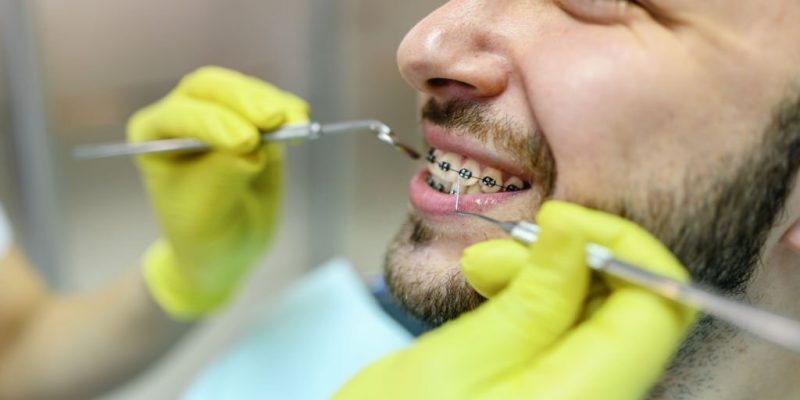Your way to a perfect smile sometimes comprises wires and metals! Yes, we’re talking about braces. One of the traditional and most predictive orthodontic treatment numerous people go through involves aligning your upper and lower teeth to bring a flawless smile!
The process of acquiring braces is pretty much like following a how-to manual. Even though each orthodontic case is unique, the method that patients undergo is relatively consistent.
However, wearing braces isn’t only about visiting the professionals once! Experts Orthodontists in Corsicana suggest that it’s a treatment plan divided into two to three stages (depending on the patient’s condition).
Therefore, let’s walk through the different stages of braces treatment for straight teeth.
Different Phases Of Orthodontic Treatment
As mentioned earlier, the orthodontic treatment comprising upper and lower teeth takes anywhere between six to thirty months. While the treatment largely varies on the classification of the malocclusion, here’s a general overview of the three stages involved in orthodontic treatment.
Phase 1 – Get Ready For Wearing Braces
After evaluating the current position of your teeth, the dentist in Corsicana, TX, goes through the many available orthodontic treatment options. In addition, they’ll look at your gums and teeth to see how healthy they are. Here’s an overview of the process:
- X-Rays
X-rays of your teeth will then be taken as part of the orthodontist’s clinical evaluation procedure. They can inspect the roots of your teeth and jawbones using orthodontic x-rays. This allows the discovery of any underlying oral health concerns.
- The Next Appointment
Once you’ve advanced the X-ray stage, your dentist will also take diagnostic photographs and intra-oral scans of your teeth during this session (photos taken before treatment).
X-rays and information from your appointments and discussions will be part of a customized treatment plan just for you.
- Describe the Treatment Plan You Have in Mind.
Many clinics prefer to welcome you and any other family members to the clinic to discuss the plan once it is completed. Your treatment plan will spell out all your options, and you or your parents will have the final say on whether or not to go through with treatment.
- Expanders
If you fall into one of these categories, your orthodontist may suggest you begin your treatment using expanders (often for younger children). In addition, those with a palate that hasn’t fully developed might benefit from using expanders. But, again, this is important when it comes to orthodontic treatment.
- See a Dentist
Orthodontic patients who don’t have crowding issues are a rare breed. The primary dentist will execute any necessary tooth extractions, on the other hand, as long as the patient needs one. Patients must wait at least two weeks after tooth extractions before installing braces.
Besides, it is wise for all patients to see their dentist and get their teeth scaled and cleaned before getting braces.
- Separators
Before your braces are put on, you’ll need to visit the clinic for separators. On the day of your braces installation, these rubber bands will be stretched over your back teeth to make room for the metal rings put over your rear anchor teeth.
Phase 2 – The Active Phase
Here’s where the magic occurs in your treatment.
To begin with, those braces are finally here! If you’re going to the clinic, you’ll want temporary relief from discomfort before arriving. It should not hurt when the dentist puts your braces on, but your teeth may get sore within a few hours, so it’s a good idea to have pain medicine with you just in case.
Going for the stages of braces is also essential here:
Step 1: The first step is to remove the dividers if they haven’t already. As the last step, the dentist will remove any plaque and tartar from each tooth and then place a dental glue in front of each bracket to secure it (or back for lingual braces).
Step 2: The next step is to treat any biting issues that may have arisen after your teeth were aligned and leveled. If you have one of these issues, your braces may have to be changed to correct a crossbite, an overbite, or an underbite.
Some patients may need a second set of x-rays to verify the placement of their teeth’s roots and to aid in repositioning any brackets that need to be placed.
Step 3: The third step is here. A doctor will “fine-tune” the alignment of the teeth and the bite during the last few months of therapy with braces. Then, dental or orthodontic modifications will be made to ensure that your teeth are in the optimum position feasible.
Phase 3 – The Retention Phase
Retainers may be picked up from your dentist or orthodontist after removing your braces. Wearing your retainers 24 hours a day for at least three months is required until your teeth and gums have had a chance to recover.
Are You Considering Having Orthodontic Treatment for Your Child?
There are several advantages to commencing orthodontic treatment for children wearing braces at a young age. Lastly, no matter the braces, ensure that you always take proper care of your teeth to avoid gum diseases.
Contact today if you want to make your child’s smile even brighter!



